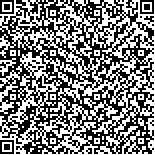| 本文已被:浏览 1125次 下载 1332次 |

码上扫一扫! |
|
|
| 盐度、光强和温度对盐生杜氏藻生长的影响及其交互作用 |
|
秦瑞阳1,2,3, 李永富1,2, 刘建国1,2
|
|
1.中国科学院海洋研究所实验海洋生物学重点实验室 海洋大科学研究中心, 山东 青岛 266071;2.青岛海洋科学与技术试点国家实验室海洋生物学与生物技术功能实验室, 山东 青岛 266237;3.中国科学院大学, 北京 100049
|
|
| 摘要: |
| 为明确各环境因子对盐生杜氏藻生长的影响是否存在交互作用及其影响的程度,采用3因素2水平正交试验方法,以7天批次培养获得的比生长速率为评价指标,研究了盐度(A)、光照强度(B)、温度(C)及两因素交互作用A×B、A×C、B×C对细胞增殖速率的影响,并测定了各条件下光合放氧速率、呼吸耗氧速率、叶绿素荧光及色素含量等以阐释作用机制。结果表明:温度是影响藻细胞增殖的最显著因素,其次是盐度与光照,交互作用B×C、A×C对绿色盐藻细胞生长有一定作用,但影响程度不如单一因子。确定利于盐藻细胞增殖的最优条件为:温度30℃、盐度110、光照强度120 μmol·m-2·s-1,而利于类胡萝卜素积累的条件则需将盐度提升至160。温度、光照通过影响光合放氧速率,而盐度通过影响呼吸耗氧速率调控藻细胞生长。 |
| 关键词: 盐生杜氏藻 正交试验 比生长速率 色素含量 交互作用 |
| DOI:10.11759/hykx20200805001 |
| 分类号:S917.3 |
| 基金项目:国家自然科学基金项目(32002411,U1706209) |
|
| Effects of salinity, light, and temperature and their interactions on Dunaliella salina growth |
|
QIN Rui-yang1,2,3, LI Yong-fu1,2, LIU Jian-guo1,2
|
|
1.CAS Key Laboratory of Experimental Marine Biology, Center for Ocean Mega-Science, Institute of Oceanology, Chinese Academy of Sciences, Qingdao 266071, China;2.Laboratory for Marine Biology and Biotechnology, Qingdao National Laboratory for Marine Science and Technology, Qingdao 266237, China;3.University of Chinese Academy of Sciences, Beijing 100049, China
|
| Abstract: |
| To confirm the effects of salinity (A), light intensity (B), and temperature (C) and interactions between the factors, namely A×B,A×C, and B×C, on the growth of Dunaliella salina and the degree of interaction, a three-factor, two-level orthogonal experiment was conducted. The specific growth rate was obtained from eight groups of batch cultures grown for 7 days at different factor combinations as an evaluated index. Rates of photosynthetic oxygen evolution and respiratory oxygen consumption, chlorophyll fluorescence, and pigment content were also measured to clarify the physiological mechanism of the interactions. The results revealed that temperature affected algal growth most significantly, followed by salinity and light intensity. Interactions B×C and A×C played important roles in regulating the growth of D. salina; however, the degree of influence was not better than that of a single factor. Optimal conditions for algal proliferation included temperature 30℃, salinity 110, and light intensity 120 μmol·m-2·s-1, whereas optimal salinity for carotenoid accumulation was 160. Moreover, both temperature and light intensity primarily regulated D. salina growth by affecting the rate of photosynthetic oxygen evolution, whereas salinity affected respiratory rate. |
| Key words: Dunaliella salina orthogonal experiment specific growth rate pigment content interaction |
